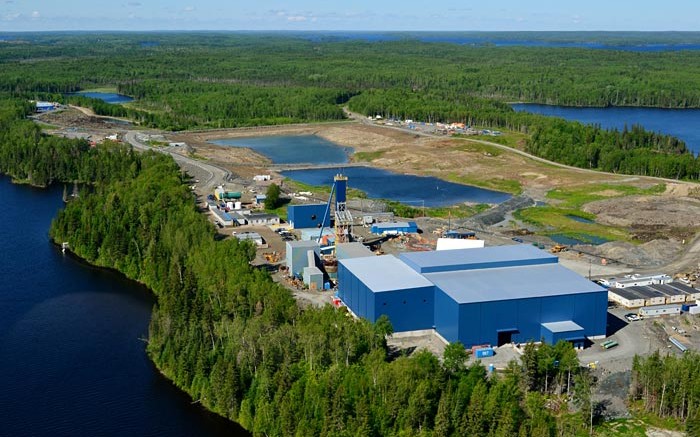VANCOUVER — Shares of developer Rubicon Minerals (TSX: RMX; NYSE-MKT: RBY) saw heavy losses after the company suspended underground development at its Phoenix gold deposit in Ontario’s prolific Red Lake district. The move stemmed from trial mining that revealed an unexpectedly “geologically complex” main F2 gold deposit.
Mineralization at Phoenix comprises vein- and breccia-hosted, high-grade gold and gold-bearing sulphide replacement zones. Gold is associated with pyrrhotite, pyrite and lesser chalcopyrite and local arsenopyrite. The gold mineralization at Phoenix is spatially associated with intense potassic alteration assemblies, often from pervasive bioitite or sericite alteration.
Rubicon has spent nearly $400 million at Phoenix over the past four years, and hoped for commercial production at the mine in the first quarter of 2016. The development plan was based on a revised preliminary economic assessment (PEA) from almost three years ago, which modelled total capital expenses of $420 million.
Rubicon was operating the trial mining on resource estimates calculated in October 2013, which featured gold ounces mostly delineated in the inferred category. Total indicated resources were 4.1 million tonnes of 8.5 grams gold per tonne for 1.13 million contained oz., while inferred resources were 9.2 million tonnes of 9.26 grams gold for 2.22 million contained oz.
“We’ve discovered that the mineralization at the project is much more geologically complex than what we’ve seen during surface drilling. This isn’t uncommon in terms of high-grade, narrow-vein deposits in Red Lake,” interim CEO Michael Winship said during a conference call.
“The effect of the geological complexity has been to mine tonnes and grades generally lower than expected. After an initial assessment after my appointment, I believe the best path forward is to better understand the deposit, and pursue an optimized implementation plan.”
Since commissioning in May 2015, Rubicon has produced 3,700 oz. gold. The company has a stockpiled 11,000 tonnes of mineralized material at an estimated 4 grams gold, which it expects to process in November. Along with the operational suspension came the “temporary layoff” of 200 employees and 110 contractors, which represents 87% of Phoenix’s workforce.
Trial stoping revealed the complexity of F2, with gold mineralization mostly hosted near two rock types: high-titanium basalts and felsic intrusive.
Although the milling results from the first trial stope matched previous models, later trial stopes highlighted “local variability” in the high-titanium, basalt unit continuity.
The company has 11 test stopes in “various stages of development and drawdown.”
Winship added that “we certainly understood the main geological controls with the lithology. However, as we’ve gotten into the trial stoping areas, we’ve come to realize the structure is more complex than we initially understood, and the gold mineralization is more variable. We had a number of planned sections through the orebody, and you can see the mineralization moves around from sublevel to sublevel … we need to apply an optimal mining method, because that’s the base of the pyramid for successful gold operations. We had intended to go with bulk long-hole mining, but when we applied those methods … there’s been too much variability. It may be we go for higher-grade, more selective mining.”
Rubicon reported $23 million of working capital in October, which could see it through geological reassessments that won’t be complete until the second quarter of 2016. Winship said the company would need more capital before restarting Phoenix’s march toward production.
Rubicon’s case highlights the problem when companies adopt mine plans based only on preliminary scoping studies and inferred resources.
Scotia Capital analyst Craig Johnston noted that “this is a prime example of the risks of going into production with only a PEA … the company, under new management, is making a prudent decision to hit the pause button until they have a better understanding of the geological model. That said, we expect the stock to underperform … and we remain on the sidelines.”
Rubicon’s stock fell 55%, or 33¢, on 21 million shares traded after the news, en route to a 26¢ close at press time. The firm holds $65 million in debt, and has 395 million shares outstanding for a $103-million market capitalization.


Be the first to comment on "Rubicon halts trial mining at Phoenix in Red Lake"